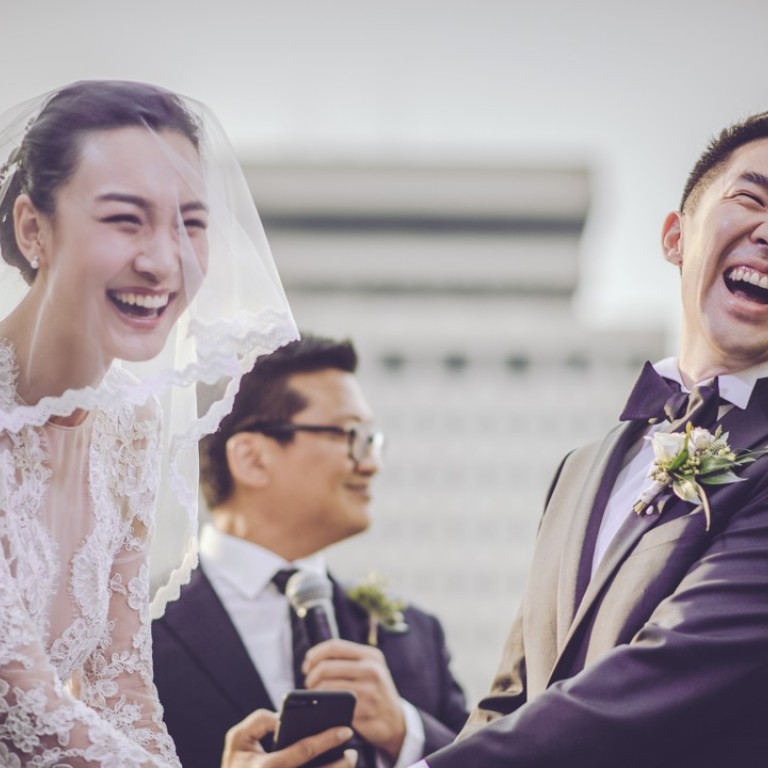
Three high-end Chinese wedding trends: quality, customisation and destination weddings
A generation of Chinese have grown up media savvy and internationally minded, and ceremonies that mix traditional and modern or Western elements are among the growing wedding trends among the rich and famous in China
When John Liu married Sophia in Shanghai last year, he wanted a wedding that reflected their life together – including their two dogs – and their love of fun and fine food.
The focus was on organising a personalised celebration that balanced the couple’s Chinese heritage with a desire to make the day fun and relaxed for their family and friends, a mix of Chinese and international guests.
It certainly helped that Liu’s restaurant, Highline, has a spectacular terrace with panoramic views, and to fulfil their epicurean tastes 600 oysters, three kilograms of caviar, all-you-can-drink champagne and whisky were on offer.

“It was mainly natural and comfortable – those are the two things I wanted to give people,” Liu says. “This is how we should be living our lives, not over-the-top; it’s just really nice quality. It’s not about lobster and oysters in a fashion where you’re showing off, it’s about having lobster and oysters so that people are happy with what they’re eating.”
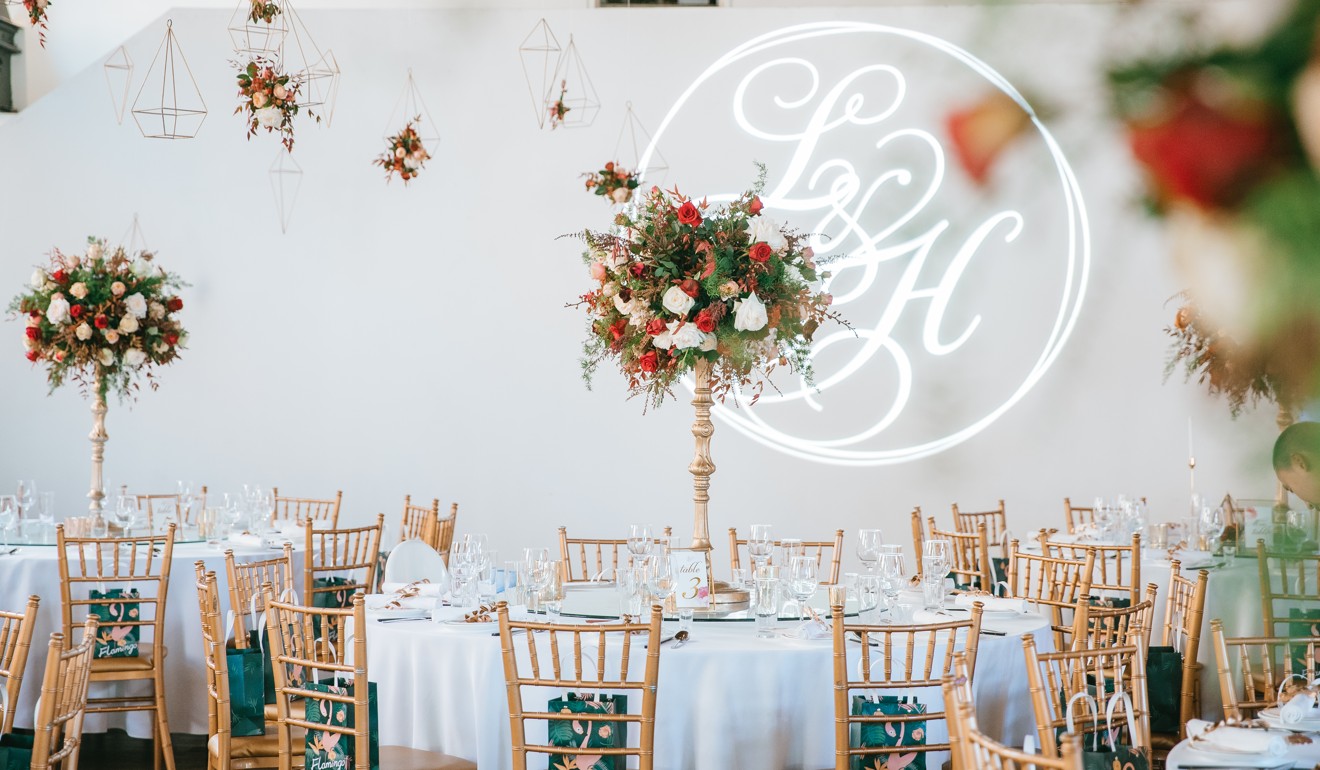
“Customisation is very important; we are always thinking of artisans we can work with to make customised items to give to the guests – for example, the small wedding favours. Personalisation and customisation are two major trends; people are now willing to spend more money on something that is handmade or customised just for them. They might have fewer flowers, but they will be beautiful imported flowers, higher quality,” she says.
China’s fragrance market: a learning curve for businesses and consumers
The other major trend, according to Mohara, is destination weddings. Bali has been a popular choice for tying the knot in paradise since actress Yang Mi and husband Hawick Lau married there in 2014. More recently, Europe has become more popular with Chinese couples.
“Destination weddings are really booming. This are popular because it means you can invite fewer guests, usually fewer than 50 guests, to your wedding in Italy, Spain or France,” says Mohara.
“Usually they will do two weddings. The destination part is for friends and close family, it’s really what the couple wants to do. Then they will do another one in China which is more for the parents and more like a banquet where the parents can invite their friends and relatives,” she says.
“I think they will keep this mix. When you look at Chinese culture and history, parents, family and elders are very important so I think they still want to keep this mix of Chinese and Western elements.”
It’s now the norm for brides to wear at least one red qipao and one white, Western-style wedding gown over the course of their big day, with four outfit changes not uncommon.
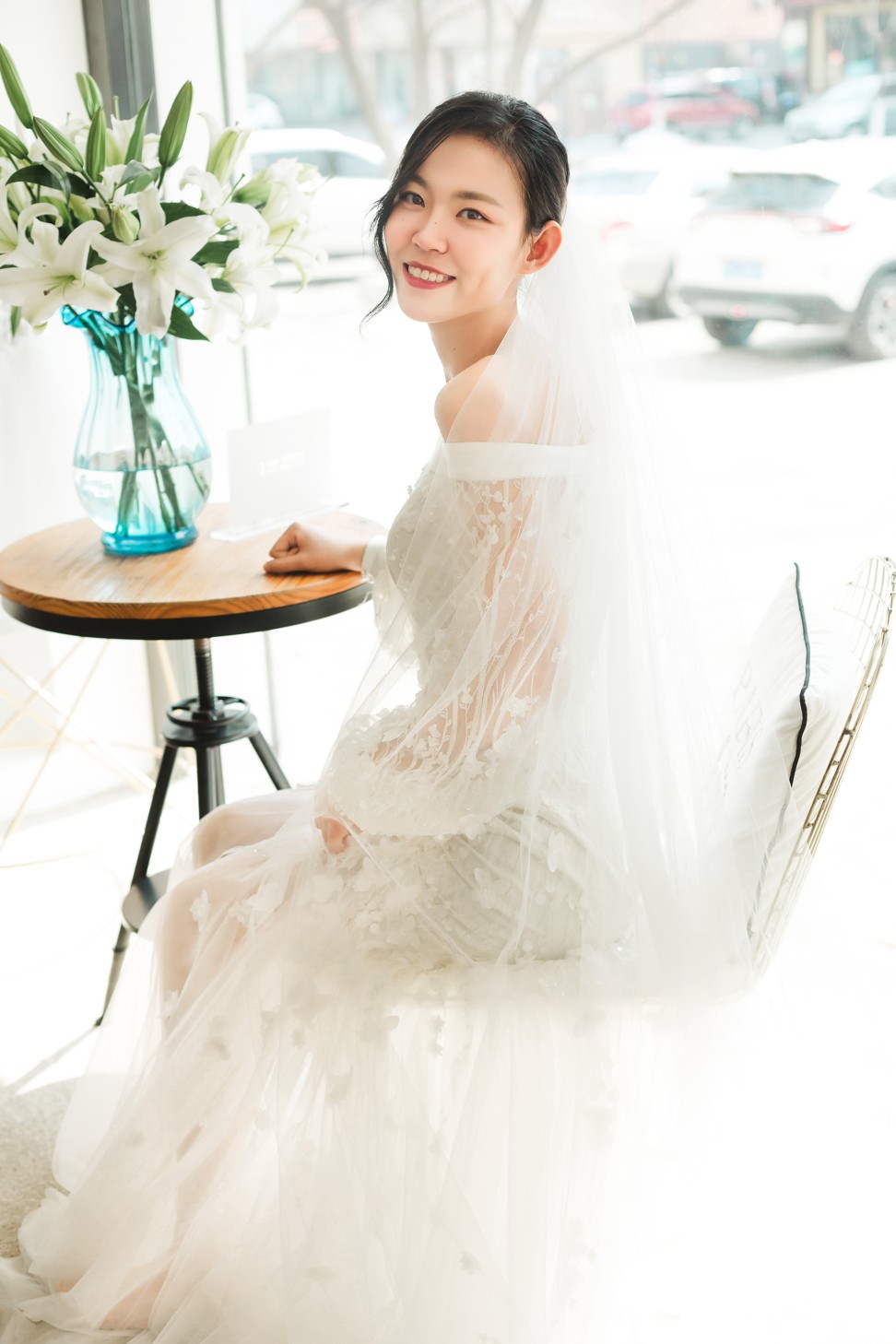
“Now, weddings are more personalised. Of course, there are still lots of traditional Chinese weddings, but the personalised ones are gaining popularity, especially high-end events where people want to differentiate themselves from others,” Jin says.
“High-end customers, they are checking what celebrities are doing, and what kind of trends are in the market, but they don’t want to be exactly the same. They will see what the trends are and [evaluate] how they will fit with their own style.”
China’s fragrance market: a learning curve for businesses and consumers
Lova Wedding’s classic, streamlined gowns sell for US$2,500 to US$3,500. Although Disney princess dresses and crystal embellishments are still popular among mainstream Chinese brides, others desire more elegance and more coverage – sleeves, shoulders and higher necklines – than gowns might have in the West.
Young Chinese people have access to more information and have more international experience than their parents’ generation.
“Chinese people have access to all of the information, they have their own taste, they have their own opinion. They are very independent, they are choosing their jobs, they choose where they live and they choose their own attitude and taste,” says Marina Miao, marketing director of Shine Moda, another local designer bridal wear label.
How Chinese fashion designers built their labels on e-commerce website, despite sneering even from their friends
“Before people got married when they were 20, now they are 25 or even 28, they are grown up. Especially brides in their 30s, they won’t listen to the opinion of their parents because they are already so independent.”
This inclination to pay more for personalisation, as well as incorporating Western traditions into Chinese weddings, has been a boon for the wedding industry overall, with research from IbisWorld estimating revenue for the wedding services industry in China at US$23.9 billion in 2017.
High-end customers, they are checking what celebrities are doing, and what kind of trends are in the market, but they don’t want to be exactly the same
In the five years to 2017, revenue grew 3.5 per cent per annum, and slow and steady growth is set to continue, with annual revenue for the industry estimated to top US$26 billion by 2022.
One sector particularly benefiting from these trends is jewellery, with Hong Kong Trade and Development Council research showing that half of all consumer jewellery sales in China are related to weddings.
Bespoke jewellery in particular has grown in popularity, with made-to-order diamond wedding rings the leading choice for 75 per cent of consumers under the age of 40 in China’s most developed cities.
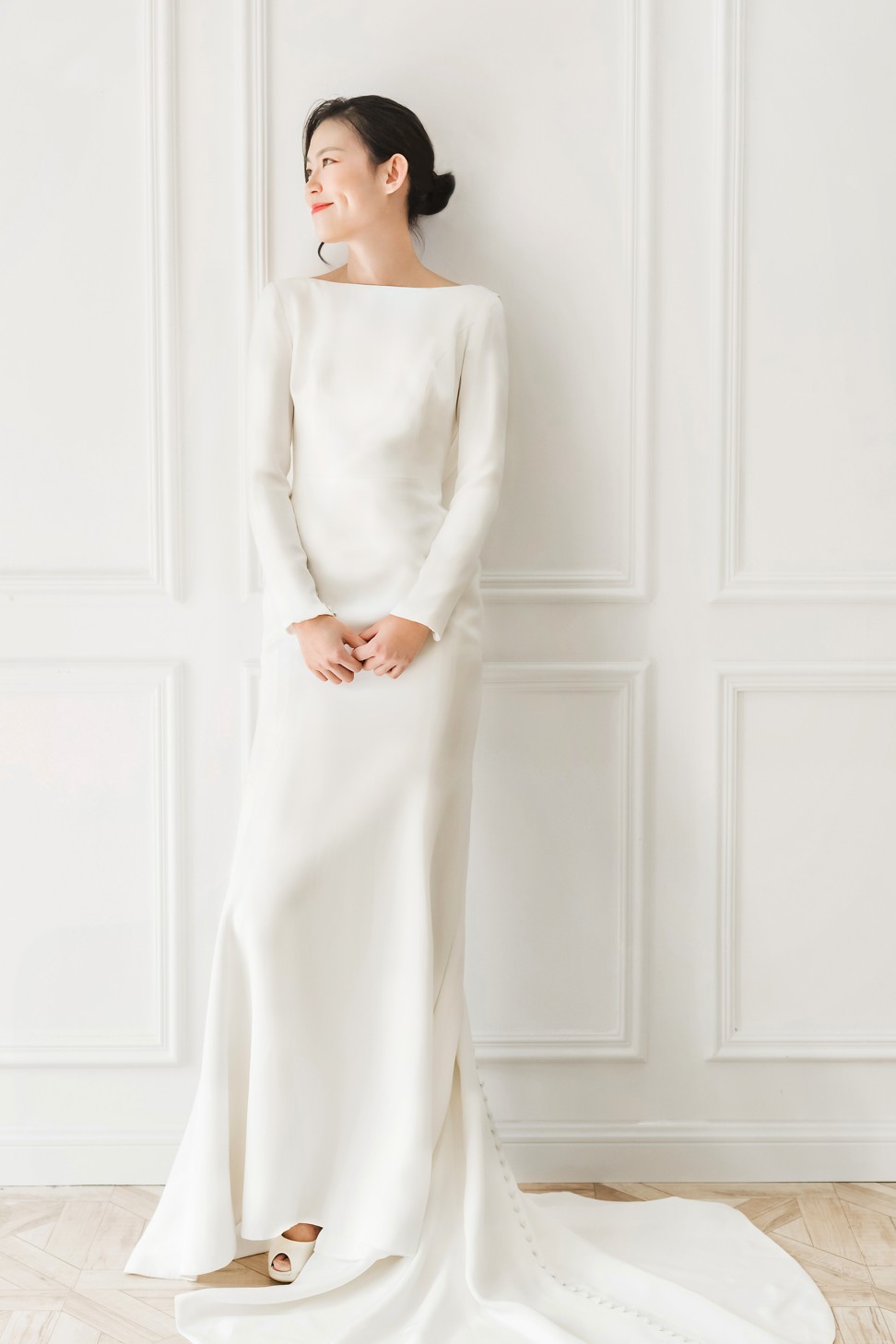
When you look at Chinese culture and history, parents, family and elders are very important so I think they still want to keep this mix of Chinese and Western elements
Since 2014, Sophie Jin has noticed a pronounced rise in wedding budgets, with young couples taking advantage of loans and newly introduced instalment payments for wedding vendors for the first time in the Chinese market.
“Our parents, they had the tradition of saving money for their kids, they were conservative about spending on themselves and their weddings. For those born after the 1980s, this type of customers doesn’t really save money, they spend a lot on luxuries – including for their wedding, because they think it’s such an important moment,” she said.
“They want to spend enough to get the best they can in the market to achieve their dream for the wedding.”
While simplicity and personalisation of weddings are on the rise in China’s major cities, the same desire for a wedding that stands out is also driving a trend for more-is-more-is-more displays of ostentation in the wake of actress Angelababy and actor Huang Xiaoming’s US$31 million wedding in Shanghai in 2015.
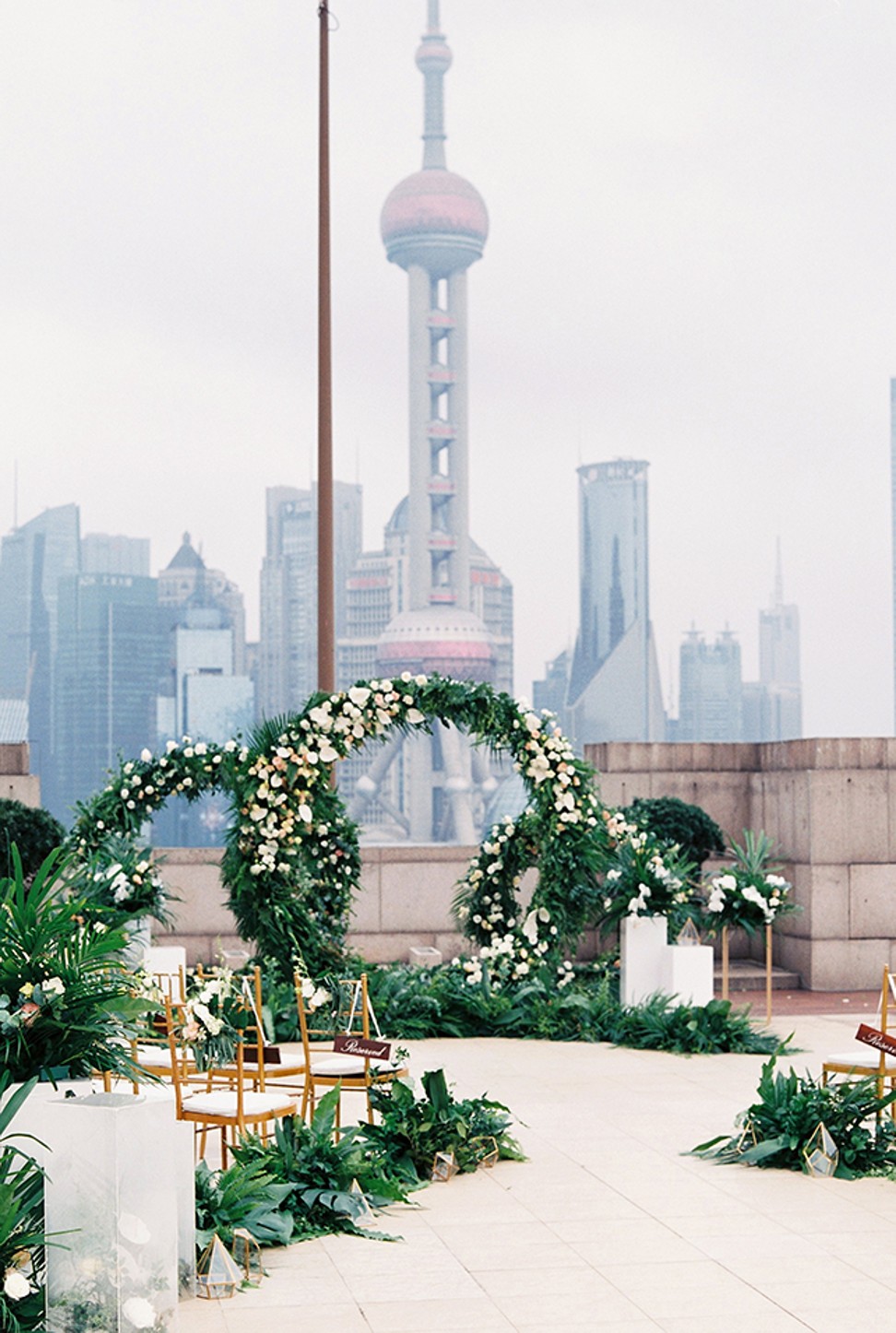
“There are some ridiculously beautiful, extraordinarily expensive weddings out here. I look through my photographer’s WeChat moments and he just shot a wedding in Gansu or wherever that you could see cost US$10 million,” John Liu says with a combination of incredulity and admiration.
“But you know, I think it’s amazing. What they’re looking for, striving for, is to stand out and that’s creating something really amazing.”
